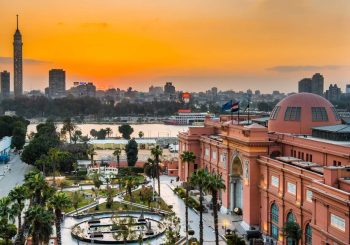Despite Egypt’s strategic reserve of pharmaceuticals, many Egyptians, particularly those with chronic diseases, are struggling to find the life-saving medications they need.
Pharmacists reported that the shortage affects both imported and locally produced drugs, putting patients in precarious situations. Elderly individuals, who often rely on multiple medications, particularly imported ones, have expressed concerns as these medications become increasingly difficult to find, according to a pharmacist from Ain Shams.
In late 2021, Egypt ranked as the ninth-highest country worldwide in terms of diabetes prevalence, with nine million citizens affected — 90 percent of whom were diagnosed with type 2 diabetes, according to Hesham El-Hefnawy, former dean of the National Institute of Diabetes and Endocrinology.
Alarming projections indicate that this figure is expected to surge to 17 million by 2045, placing Egypt seventh globally in terms of diabetes rates.
Prime Minister Mostafa Madbouly held a meeting with Health Minister Khaled Abdel-Ghaffar in May, stressing the need to take all necessary measures to ensure the availability of needed medicines.
“We recognize the challenges facing the pharmaceutical sector,” Madbouly said, pledging government collaboration with the private sector to overcome any obstacles. “We will face any problem together and work to solve it.”
The primary cause of the crisis is the lack of foreign currency required for importing medications, stated Maged George, head of the Egyptian Exporting Council of Medical Industries (ECMI), in 2023.
Since the outbreak of the Russia-Ukraine war, Egypt has faced a severe shortage of US dollars, exacerbating inflationary pressures and placing a heavy burden on the economy. Consequently, a parallel market emerged where the dollar was traded at a higher rate than the official exchange rate, reaching EGP 52/USD, while it trades at almost EGP 31/USD in banks.
In response to the currency crisis and as the nation secured an increased USD 8 billion (EGP 380 billion) program with the IMF, the central bank devalued the Egyptian pound to around 49.5 pounds to the dollar and promised a transition to a more adaptable exchange rate mechanism.
Simultaneously, the government imposed forced pricing on certain types of medicines, citing national security concerns. This predicament has placed pharmaceutical factories in a challenging position, as they grapple with increased prices of imported raw materials and elevated real costs while striving to adhere to the forced pricing regime.
Despite these challenges, Egypt’s pharmaceutical market size is projected to reach EGP 120 billion (USD 2.5 billion) by the end of 2023, with an annual growth rate between 15 and 20 percent. The country’s medical and pharmaceutical exports are expected to surge by over 96 percent, reaching USD 1.9 billion (EGP 92 billion) in 2023 compared to USD 968 million (EGP 45.98 billion) in 2022, according to data from the Federation of Egyptian Chambers of Commerce (FEDCOC) obtained by Ahram Online.
Conversely, imports are anticipated to decline by 28.5 percent, decreasing from USD 700 million (EGP 33.25 billion) in 2022 to USD 500 million (EGP 23.75 billion) in 2023.
Market revenues are projected to reach USD 1.437 billion (EGP 68.2 billion) by the end of 2023, with oncology drugs expected to be the largest segment, accounting for USD 217.7 million (EGP 21 million), according to Statista, a German data collection platform. The market is further expected to grow at an annual rate of 6.27 percent between 2023 and 2028, reaching a volume of USD 1.94 billion (EGP 92 billion) by 2028.
Currently, Egypt maintains a strategic stock of medicines sufficient to cover 6-12 months of local consumption. For medicines without substitutes, the inventory can cover local requirements for three to six months.
In the meeting, Madbouly and representatives from the pharmaceutical industry discussed strategies for expanding exports and addressing industry challenges. Abdel-Ghaffar highlighted the industry’s stability and investment opportunities, reaffirming the government’s commitment to addressing challenges.
Ali Ghamrawy, Chairperson of the Egyptian Drug Authority, presented data on pharmaceutical exports, detailing recent progress and ongoing efforts to support growth. These efforts include obtaining international accreditations, strengthening regional cooperation, and facilitating export procedures.
Ghamrawy reported increases in exports to Zambia and Zimbabwe in 2023, as well as significant growth in exports of medicinal plants and herbs, reaching over USD 280 million (EGP 13.3 billion), and cosmetic exports, totaling USD 700 million (EGP 33.2 billion) in 2022 and 2023.
Egypt’s pharmaceutical sector faces significant challenges due to currency shortages and economic pressures. However, with strategic government intervention and collaboration with the private sector, there is potential for growth, particularly in expanding exports and stabilizing the domestic market.






Comments (0)